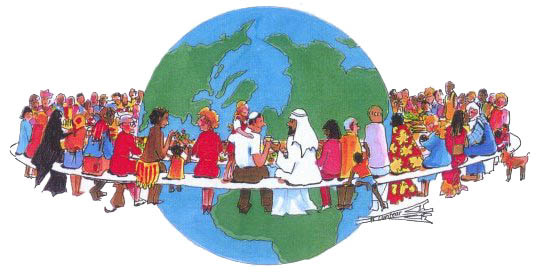World Cultures and Geography Objectives
In Grade 6, students study people, places, and societies of the contemporary world. Societies for study may be from but are not limited to the following regions of the world: Europe, Russia and the Eurasian republics, North America, Central America and the Caribbean, South America, Southwest Asia-North Africa, Sub-Saharan Africa, South Asia, East Asia, Southeast Asia, Australia, and the Pacific realm. Students describe the influence of individuals and groups on historical and contemporary events in those societies and identify the locations and geographic characteristics of various societies. Students identify different ways of organizing economic and governmental systems. The concepts of limited and unlimited government are introduced, and students describe the nature of citizenship in various societies. Students compare institutions common to all societies such as government, education, and religious institutions. Students explain how the level of technology affects the development of the various societies and identify different points of view about events.
|
|||
|
|||
History/Culture:
The student will compare and contrast similarities and differences in and among cultures in different societies. Define the concept of culture and cultural regions. Describe traits that define culture.
Understand certain institutions that are basic to all societies but may vary among them ( government, economy, education, religion, traditions). Explain why cultures borrow from others. Evaluate how cultural borrowing/diffusion affects world cultures. Evaluate the consequences of improved communications among cultures.
Geography:
The student uses maps, globes, graphs, charts, models and databases to answer geographical questions. Students will locate major historical and contemporary societies on maps and globes (Mesopotamia, Ancient Greece, Rome, China, and Japan).
Students will identify and explain the geographical factors responsible for the location of economic activity in places and regions.
Government:
The student will understand concepts of limited government, totalitarian and nondemocratic governments. Students will describe, identify examples of and reasons for governments ran by one, few, and many. Students will compare how the government functions in countries such as China, Germany, and Russia.
Economy:
The student understands various ways in which people organize economic systems. Compare ways societies organize production and distribute goods and services. Students will identify and differentiate among traditional, market, and command economies of contemporary societies. Students will understand the benefits of US free enterprise systems. The student will explain the impact of scarcity of international trade and economic interdependence: primary, secondary, tertiary, quaternary.
Social Studies Skills:
The student will communicate in written, oral, and visual forms. Students will express ideas orally based on research and experience, create written & visual material such as journal entries, projects, reports, graphic organizers, outlines, and bibliographies using standard grammar, spelling, sentence structure, punctuation, and terminology correctly in the interactive class notebook.
______________________________________________________________________________________________
Social Studies 6 World Cultures and Geography Units* 
- Unit 01: The World’s Geographic Patterns
- Unit 02: We Are Family: Europe
- Unit 03: A Crossroads of Diffusion: Southwest Asia/North Africa
- Unit 04: Facing Challenges: Sub-Saharan Africa
- Unit 05:Tradition in a Modernizing World: East and Southeast Asia
- Unit 06: Unity and Division: South Asia
- Unit 07: A Legacy of Colonialism: Latin America
- Unit 08:Empire and Ethnicity: Russia and the Eurasian Republics
- Unit 09: Adapting Down Under: Pacific Realm
- Unit 10: Freedom for All: The United States and Canada
*Subject to change
